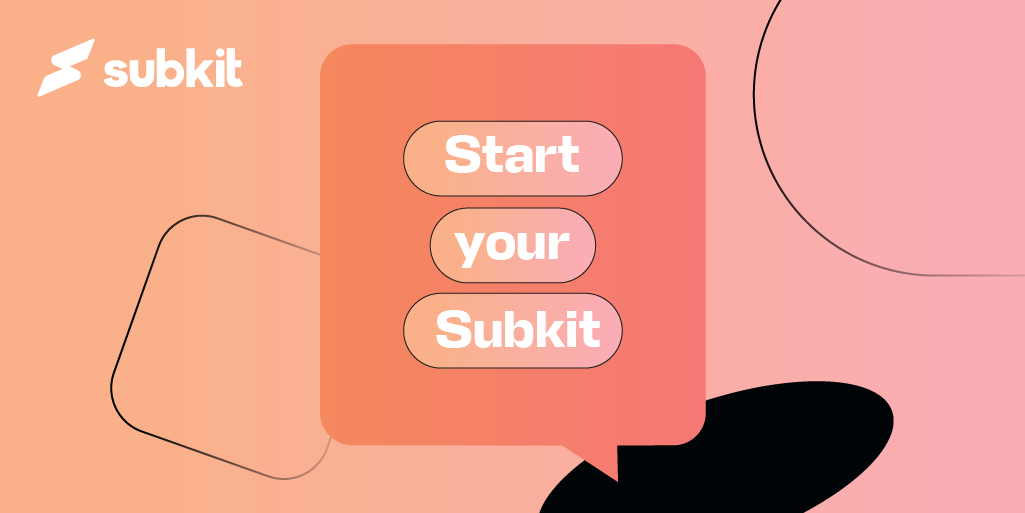Shopping has undergone significant shifts in recent years.
Consumers order online and often expect same-day in-store pickup to be available. They want to receive customer support via social media, and generally expect a consistent experience from their favorite brands throughout every step of the buying (and support) process.
To stay in tune with consumer behavior and responsive to ever-evolving consumer needs, you should create an omnichannel distribution strategy. This will help you offer your customers an integrated and seamless experience across all channels.
You might be wondering where to begin – and you're right, there's a lot to unpack!
So, what better way to start than by learning the basics and best practices?
Let’s dive in to explore strategy and tactics for omnichannel distribution, with ideas for how you can apply these methods to your own business.
What is Omnichannel Distribution?
Omnichannel distribution is a systematic process of aligning and integrating all touchpoints, allowing customers to complete purchases on their desired channel.
By integrating all sales channels and aligning them, customers get a seamless, one-touch experience across all channels.
It’s an advanced approach to distribution that is focused on enabling customers to buy and receive products (and services) from multiple channels. And this can’t be achieved without a highly efficient supply chain.
For instance, customers can order a product online and select in-store pickup rather than delivery. This requires a sophisticated distribution network – one with an omnichannel supply chain network that is fully integrated with distribution channels and routes customer orders accordingly.
McKinsey found traditional supply chain networks are not suitable for same-day delivery while delivering superior customer service. This is one reason why switching to omnichannel distribution often requires a complete overhaul of supply chain strategy.
Click-and-mortar businesses (also known as ecommerce businesses) usually have a single sales channel, which is their website or online store. On the other hand, businesses with both physical stores and online stores have to create an omnichannel distribution strategy. And it's ultimately a benefit to any business when integrated well.
How Omnichannel Distribution Works?

Here's how omnichannel distribution works:
- The customer contacts your business through any sales channel
- The customer places an order and selects the preferred delivery option
- The inventory management system confirms the order
- The order is fulfilled, and the customer receives a tracking number
- The order is delivered
- If necessary, the customer can choose a preferred return and refund channel
- Payment is successfully processed
The beauty of omnichannel distribution is that it allows your customers to purchase from any channel, and choose any delivery method, based on their preference. This provides a seamless shopping experience to your customers, regardless of which sales channel they use. Meanwhile, everything is integrated in the backend through your inventory management system for a consistent experience.

Omnichannel Vs. Ecommerce
Omnichannel does not simply mean selling products online in addition to your brick-and-mortar store.
The omnichannel approach relies on integrating different sales and distribution channels, which work together as a collective whole.
E-commerce refers to the selling of products and/or services online, and can include channels such as social media, email marketing, and search engine marketing. It's limited to online sales only.
In reality, omnichannel is broader than ecommerce. It includes ecommerce channels and online sales, but it also encompasses other channels and touchpoints beyond the digital realm.
Omnichannel Strategy Vs. Multichannel Distribution

Omnichannel distribution isn’t the same as multichannel distribution.
In a multichannel approach, you offer products through different channels and they act as separate channels.
Omnichannel distribution takes multichannel a step further by integrating all sales channels to offer a seamless experience to your customer base.
A key characteristic of an omnichannel strategy is that it centers around the customer. In contrast, the multichannel approach focuses on your brand instead of the customer.
In the digital age with new products and constantly shifting customer preferences, multichannel is an outdated approach that no longer works as well as it may have in the past.
Subkit is an all-in-one tool for solopreneurs and small businesses to launch and scale. Sign up today and grow smarter with Subkit. 🌱
Omnichannel Distribution Benefits and Why It’s Important
Five key benefits of omnichannel distribution make it a must-have for businesses of all sizes:
- Seamless experience
- More sales channels
- Integration between online stores and physical stores
- Expedited shipping
- Growth
1. Seamless Experience
An omnichannel distribution and supply chain puts customers first by focusing on their experience. This approach helps you meet customer expectations.
Research shows that as much as 61% of consumers will pay at least 5% more for a better experience, while 86% of consumers will leave a company after only 2 poor experiences.
Improving the customer experience (CX) has other perks too – such as improved customer satisfaction, retention, and sales:

Your ideal customers expect superior CX, and they are willing to pay for it.
This is the number one reason why you should switch to an omnichannel distribution strategy: It puts your business one step closer to offering impeccable customer experience.
2. More Sales Channels
Having a website for your physical store is not very helpful if customers cannot place an order. Similarly, if you have a Facebook page for your brick-and-mortar store but have not set up a shop on Facebook, you are losing potential customers.
The omnichannel model focuses on converting touchpoints into sales channels, significantly increasing the number of sales channels your business controls.
3. Integration Between Online Stores and Physical Stores
According to a recent survey, 41% of consumers consider the ability to browse products they are looking for on a retailer's website or app while in the store to be an important part of their physical store experience.

An omnichannel strategy for distribution integrates all online and physical stores. This not only creates a great shopping experience, but also significantly improves the order management and inventory management systems once complete.
How?
There are no silos and your business acts as a whole.
For example, you can sell products through an ecommerce store, social media, mobile app, marketplaces like Amazon, and brick-and-mortar stores. And all of these channels are connected and fully integrated, pulling in the same direction, towards the same end goal.
4. Expedited Shipping
Omnichannel fulfillment is highly efficient and lets you significantly reduce shipping time and cost. Same-day delivery is what your customers expect.
Statistics show 61% of consumers are willing to pay more for the same day delivery and 49% of buyers say that same-day delivery persuades them to shop online:

Omnichannel distribution supports expedited shipping because it keeps your inventory management system integrated and requires efficiency, making it easier to fulfill orders quickly.
5. Exponential Business Growth
With new sales channels, an integrated supply chain and distribution, an efficient fulfillment system, and improved customer experience, an omnichannel strategy significantly increases revenue and boosts growth.
Research published by Harvard Business Review shows that omnichannel customers spend 10% more online and 4% more in stores than single-channel customers. A Google study reported that omnichannel strategies drive as much as an 80% higher rate of incremental store visits which translates to more sales and incremental increase in revenue.
Businesses that use three or more channels have, on average, a 494% higher order rate than businesses using a single-channel campaign:

Omnichannel distribution drives sales from several sources such as mobile apps, search engines, social media, and walk-ins. This makes it more profitable than a single-channel strategy, which will always be limited to that one touchpoint.
How to Leverage Omnichannel Strategy for Your Business
Implementing an omnichannel distribution strategy is a systematic process that involves the following key steps:
- Customer first approach
- Centralized inventory management
- Software integration
- Fulfillment process optimization
- Regular monitoring
1. Customer First
The omnichannel approach starts with understanding your ideal customers, their needs, and placing them at the center of everything you do.
To achieve this, you need to collect data through interviews and surveys from your target audience. Then, create buyer personas to identify the channels your ideal customers use. With that in mind, craft a message or content strategy to promote your business to that audience.
In short: Be where your customers are, and communicate how they expect.
For example, if your target audience uses Instagram, you need to create an Instagram Shop so potential customers can shop when they are using Instagram, and have a very active profile with up-to-date images and videos. Creating buyer personas is the recommended approach to finding various channels that your ideal customers use, because it requires you to think like your ideal customer – and get out to do the research to back it up.
Start building a customer first strategy with these steps:
- Learn who your ideal customers are
- Figure out your brand’s place in that conversation
- Offer excellent customer experience across all touchpoints
2. Centralized Inventory Management System
Your inventory management software is the key to omnichannel distribution. A centralized and highly efficient inventory software tracks inventory across all channels and warehouses.
Setting this up is one of the biggest challenges that businesses face when implementing omnichannel distribution.
Not only does it have to be integrated with all channels and warehouses, but it must also be fully integrated with your supply chain system.
You can select a sophisticated inventory management software, but your staff will need to keep it updated, so additional complexity is not always a plus. Inventory management always requires some level of manual work, and it is difficult to fully automate – this can create issues when you have distributed inventory across multiple warehouses.
3. Integration

The next step in implementing an omnichannel strategy is to integrate all of the tools, platforms, and software you are using. For more information, check out Vinculum's use case on the topic.
Everything from your inventory management tool, fulfillment platform, CRM tool, payment processors, sales channels, and supply chain should all be integrated and working together.
For example, when a customer places an online order from a mobile device and selects home delivery, here’s what should happen next:
- The payment should be processed immediately
- The inventory management tool should pass the order to the fulfillment center
- The relevant sales channel should be attributed for a sale in your analytics tool
- The CRM tool must process customer information and segment it based on predefined criteria
- The order needs to be verified (either manually or automatically)
- The relevant fulfillment center should pack and ship the product to the customer
Thankfully, most of these tasks are managed and processed automatically and require minimal manual work. Your main concerns should be to ensure that there are no lags or breakdowns in the system, that all the tools work in real-time and are fully integrated, and that any customer issues are resolved promptly.
Let’s say you are planning to generate sales online for your brick-and-mortar store. Subkit lets you sell physical and digital products online at no startup cost, so set up is a breeze. You can start selling online in the next 5 minutes with Subkit making it an ideal tool for solopreneurs who are planning to implement an omnichannel strategy, because Subkit handles many of those customer touchpoints seamlessly for you. And on the Subkit Starter plan, we only get paid once you start making money.

Tools like Subkit make switching to an omnichannel strategy easier and more fun.
4. Fulfillment Optimization
Optimizing the fulfillment process should be among your top priorities. It’s a key component of omnichannel distribution: Customers want to receive their orders quickly, preferably on the same day, and you can’t meet their expectations with a poor fulfillment process.

An efficient fulfillment process means you can manage multiple orders without any delays.
Focus on these best practices to optimize your fulfillment process:
- Optimize incoming inventory – integrate your fulfillment centers with the supply chain
- Order inventory storage and set up an organized system
- Order processing, picking, and packaging require the most time – optimize these processes to reduce delivery time
- Optimize shipping by reducing package weight, using sustainable materials, and using reliable logistic partners
- Make it easy for customers to process returns
5. Monitoring
An omnichannel distribution strategy requires constant monitoring and tweaking based on data.
It isn’t a one-time strategy that you can set and forget.
You need to constantly monitor data to find more ways to improve customer experience, add new channels, optimize existing sales channels, add new fulfillment centers, and more.
The changes you make to your omnichannel strategy, however, should be data-driven and not based on gut instinct. The whole point is to build a well-organized system that operates efficiently and scales with customer demand.

Start your Subkit: Take the First Step Towards Omnichannel Distribution Today
Today’s consumers are smart.
And they have a lot of options to choose from when shopping online.
If you want to stay relevant, you have to be proactive and adaptable in every strategy you implement in your business. Even if you have implemented omnichannel distribution, you need to stay ahead of the curve and constantly add new channels based on the latest trends and changing customer demands.
Subkit is a helpful and cost-effective platform for businesses that are planning to leverage omnichannel distribution to increase sales. It makes online selling a piece of cake for businesses and solopreneurs. Shifting your brick-and-mortar stores online and switching to an omnichannel model is just a few clicks away. Ready to open up a new revenue stream in only minutes?
With Subkit, you can create an SEO-optimized landing page for your business, sell digital and physical products, and offer services online.
Start your Subkit and sign up free today.




